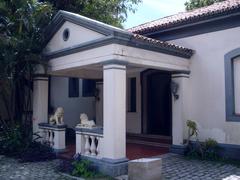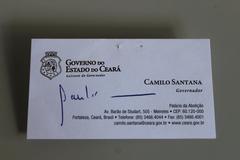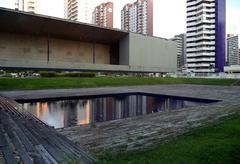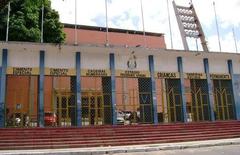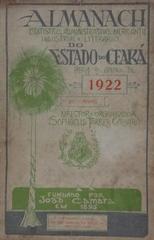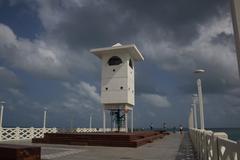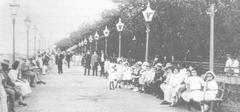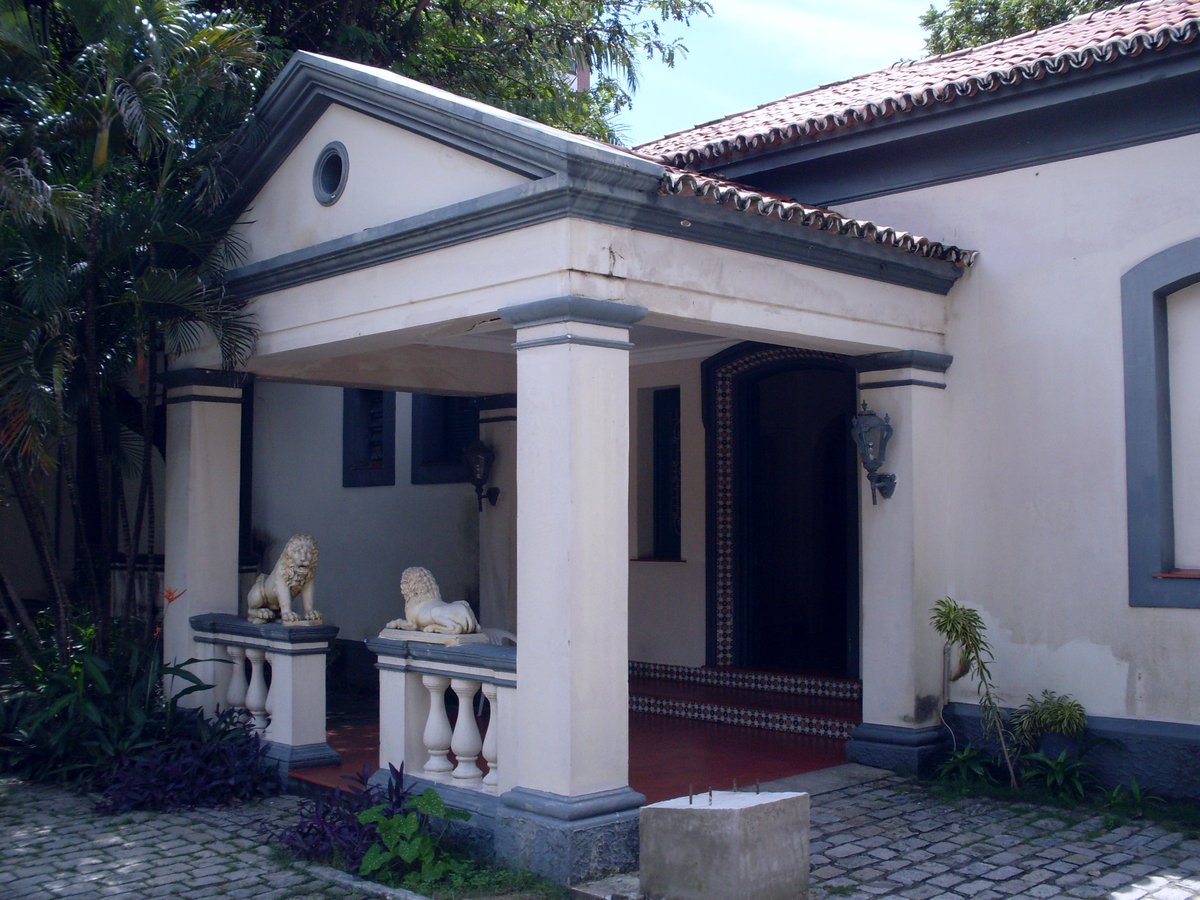
Comprehensive Guide to Visiting Museu da Imagem e do Som Chico Albuquerque, Fortaleza, Brazil
Date: 20/07/2024
Introduction
The Museu da Imagem e do Som Chico Albuquerque, located in Fortaleza, Brazil, stands as a beacon of cultural preservation and education, dedicated to the rich audiovisual heritage of Ceará. Established in 1970, the museum was named after Chico Albuquerque, an influential Brazilian photographer and filmmaker whose contributions to visual arts and cinema have had a lasting impact (Instituto Moreira Salles). The museum’s mission encompasses the preservation of historical audiovisual materials, offering a comprehensive overview of the region’s cultural evolution. Housed in a modernist architectural structure designed to facilitate both the preservation and exhibition of delicate media, the museum serves as a vital research institution and public exhibition space. Visitors can explore an extensive collection of photographs, films, and audio recordings that narrate the historical and cultural journey of Ceará and Brazil at large. Additionally, the museum is a vibrant cultural center, hosting a variety of educational programs, workshops, and seminars aimed at promoting the visual and auditory arts. This guide provides an in-depth exploration of the Museu da Imagem e do Som Chico Albuquerque, covering its history, architectural significance, collections, visitor information, and more.
Table of Contents
- History and Significance
- Architectural Significance
- Collections and Exhibits
- Visitor Information
- Educational and Cultural Programs
- Preservation and Research
- Community Engagement and Impact
- Future Directions
Exploring Museu da Imagem e do Som Chico Albuquerque - History, Tickets, and Visitor Information
History and Significance
Origins and Establishment
The Museu da Imagem e do Som Chico Albuquerque, located in Fortaleza, Brazil, is a pivotal institution dedicated to preserving and showcasing the rich cultural heritage of Ceará. The museum was established in 1970, initially conceived as a repository for audiovisual materials that document the region’s history and cultural evolution. Named after the renowned Brazilian photographer and filmmaker Chico Albuquerque, the museum honors his significant contributions to the visual arts and his pioneering work in Brazilian cinema.
Chico Albuquerque - A Legacy in Visual Arts
Chico Albuquerque (1917-2000) was a seminal figure in Brazilian photography and cinema. His career spanned several decades, during which he produced an extensive body of work that captured the essence of Brazilian life and culture. Albuquerque’s pioneering techniques in portrait and commercial photography, as well as his innovative approaches to filmmaking, have left an indelible mark on the visual arts. The museum’s dedication to him underscores his influence and the importance of his work in the broader context of Brazilian cultural history (Instituto Moreira Salles).
Architectural Significance
The museum’s building itself is a testament to modernist architectural design, reflecting the aesthetic sensibilities of the late 20th century. Designed to facilitate the preservation and exhibition of audiovisual materials, the structure incorporates state-of-the-art facilities for the storage and display of delicate media. The architectural design emphasizes functionality and accessibility, ensuring that the museum can serve both as a research institution and a public exhibition space.
Collections and Exhibits
The Museu da Imagem e do Som Chico Albuquerque houses an extensive collection of photographs, films, audio recordings, and other audiovisual materials. These collections provide a comprehensive overview of the cultural and historical developments in Ceará and Brazil at large. Key exhibits include:
- Photographic Archives: Featuring works by Chico Albuquerque and other prominent photographers, these archives offer a visual history of the region, capturing everything from everyday life to significant historical events.
- Film and Video Collections: The museum’s film archives include rare footage of early Brazilian cinema, documentaries, and contemporary works that highlight the evolution of the medium in Brazil.
- Audio Recordings: A vast array of audio recordings, including traditional music, oral histories, and radio broadcasts, provide an auditory journey through the cultural landscape of Ceará.
Visitor Information
Ticket Prices and Opening Hours
To plan your visit, it’s essential to know the practical details:
- Ticket Prices: Admission is affordable, with discounts available for students, seniors, and groups. Specific prices can be found on the official museum website.
- Visiting Hours: The museum is open Tuesday through Sunday, from 9:00 AM to 5:00 PM. It is closed on Mondays and public holidays.
Travel Tips and Nearby Attractions
- Location: The museum is centrally located in Fortaleza, making it easily accessible by public transport or car.
- Travel Tips: Consider visiting nearby attractions such as the Dragão do Mar Center of Art and Culture and the Fortaleza Metropolitan Cathedral to make the most of your trip.
- Accessibility: The museum is wheelchair accessible and provides facilities for visitors with disabilities.
Educational and Cultural Programs
The museum is not just a repository of historical artifacts but also an active cultural center. It hosts a variety of educational programs, workshops, and seminars aimed at promoting the visual and auditory arts. These programs are designed to engage the community and foster a deeper understanding of the region’s cultural heritage. Notable initiatives include:
- Photography Workshops: Led by professional photographers, these workshops offer participants the opportunity to learn about photographic techniques and the history of photography in Brazil.
- Film Screenings and Festivals: The museum regularly screens films from its collection and hosts film festivals that celebrate Brazilian cinema. These events provide a platform for filmmakers to showcase their work and for audiences to engage with contemporary and historical films.
- Lectures and Seminars: Featuring scholars and practitioners in the fields of photography, film, and audio recording, these events offer in-depth explorations of various aspects of the visual and auditory arts.
Preservation and Research
A significant aspect of the museum’s mission is the preservation of audiovisual materials. The museum employs advanced preservation techniques to ensure that its collections remain accessible for future generations. This includes digitizing fragile materials, maintaining climate-controlled storage environments, and employing specialized conservation methods.
In addition to preservation, the museum is a hub for research. Scholars from around the world visit the museum to study its collections, contributing to a growing body of academic work on Brazilian visual and auditory culture. The museum’s research library provides access to a wealth of resources, including rare books, periodicals, and archival documents.
Community Engagement and Impact
The Museu da Imagem e do Som Chico Albuquerque plays a vital role in the cultural life of Fortaleza and the broader region of Ceará. By providing access to its collections and hosting a variety of public programs, the museum fosters a sense of community and cultural pride. It serves as a space where people can come together to explore and celebrate their shared heritage.
The museum’s impact extends beyond its immediate community. Through partnerships with other cultural institutions, both in Brazil and internationally, the museum contributes to a global dialogue on the importance of preserving and promoting cultural heritage. These collaborations have led to joint exhibitions, research projects, and educational initiatives that highlight the universal value of audiovisual materials.
Future Directions
Looking ahead, the Museu da Imagem e do Som Chico Albuquerque is committed to expanding its collections and enhancing its public programs. Plans for the future include the development of new exhibition spaces, the acquisition of additional audiovisual materials, and the implementation of innovative educational programs. These efforts are aimed at ensuring that the museum remains a dynamic and relevant institution that continues to inspire and educate future generations.
For more information about the museum and its programs, visit the official website.
